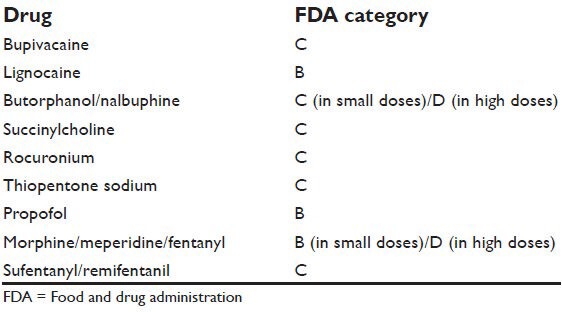The EMS protocol for obstetric emergencies basically goes down one of two paths – is baby coming out or not? If so, it’s all about positioning and referring to the protocol for emergency childbirth (stay tuned!) But if not, the focus shifts to hemorrhage/shock management and close monitoring with a high index of suspicion for maternal hypertension and pre-eclampsia/eclampsia. If an ALS unit is taking care of the patient, this is where they will call OLMC requesting to give IV magnesium, generally as a 2-4g IV infusion. But again, like with any other order, make sure you confirm dosing with clear, closed-loop communication!
The rest of the game is about transport, at this point. That is, right up until baby comes a’knockin! What do our crews do then? We’ll find out next week! Unless you’re all about those spoilers, in which case you’ve got www.nycremsco.org and the protocol binder for more.
Dave
- Medications
- Pharmacology
- Respiratory / Pulm
- POCUS
- Infectious Disease
- Ophthalmology
- Airway
- Obstetrics / Gynecology
- Environmental
- Procedures
- Foreign Body
- Pediatrics
- Cardiovascular
- EKG
- Critical Care
- Radiology
- Emergency
- Admin
- Orthopedics
- Nerve Blocks
- DVT
- Finance
- EMS
- Benzodiazepines
- Neurology
- Medical Legal
- Psychiatry
- Anal Fissure
- Hemorroids
- Bupivacaine
- Ropivacaine
- EM
- Neck Trauma
- Emergency Medicine
- Maisonneuve Fracture
- Diverticulitis
- Corneal Foreign Body
- Gabapentin
- Lethal Analgesic Dyad
- Opioids
- Galea Laceration
- Dialysis Catheter
- Second Victim Syndrome
- Nasal Septal Hematoma
- Nephrology / Renal
- Hematology / Oncology
- Dental / ENT
- Dermatology
- Endocrine
- Gastroenterology
- March 2025
- February 2025
- January 2025
- December 2024
- November 2024
- October 2024
- September 2024
- July 2024
- June 2024
- May 2024
- April 2024
- March 2024
- February 2024
- January 2024
- December 2023
- November 2023
- October 2023
- May 2023
- February 2023
- January 2023
- December 2022
- November 2022
- October 2022
- September 2022
- August 2022
- July 2022
- June 2022
- May 2022
- April 2022
- March 2022
- February 2022
- January 2022
- December 2021
- November 2021
- October 2021
- September 2021
- August 2021
- July 2021
- June 2021
- May 2021
- April 2021
- March 2021
- February 2021
- January 2021
- December 2020
- November 2020
- October 2020
- September 2020
- August 2020
- July 2020
- June 2020
- May 2020
- March 2020
- February 2020
- January 2020
- December 2019
- November 2019
- October 2019
- September 2019
- August 2019
- July 2019
- June 2019
- May 2019
- April 2019
- March 2019
- February 2019
- January 2019
- December 2018
- November 2018
- October 2018
- September 2018
- August 2018
- July 2018
- June 2018
- May 2018
- April 2018
- March 2018
- February 2018
- January 2018
- December 2017
- November 2017
- October 2017
- September 2017
- August 2017
- July 2017
Case of eclampsia in your resus bay
Diagnosis:
new-onset tonic-clonic, focal, or multifocal seizures in the absence of other causative conditions (eg, epilepsy, cerebral arterial ischemia and infarction, intracranial hemorrhage, drug use),
typically but does not have to be present in the presence of preexisting hypertensive disorder of pregnancy (preeclampsia, gestational hypertension, HELLP syndrome)
Presentation:
Hypertension
Headache (persistent frontal or occipital headaches or thunderclap headaches)
Visual disturbances (scotomata, loss of vision [cortical blindness], blurred vision, diplopia, visual field defects [eg, homonymous hemianopsia], photophobia)
Right upper quadrant or epigastric pain
Asymptomatic
Management:
Start with ABCs
Consider alternative causes of seizures based on additional information other than eclampsia: hyponatremia, ICH, hypoglycemia, etc.
Usually eclamptic seizures subside on its own
If pt is seizing => administer Mg Loading dose 4-6 g IV over 15 to 20 minutes. An alternative dose/route is magnesium sulfate 5 g intramuscularly into each buttock for a total of 10 g
Followed by Maintenance dose – magnesium sulfate 2 g/hour as a continuous IV infusion to women with good renal function.
If pt is in status => in cases refractory to magnesium sulfate (patient is still seizing at 20 minutes after the bolus or more than two recurrences), administer sodium amobarbital (250 mg IV over three minutes), thiopental, or phenytoin (1250 mg IV at a rate of 50 mg/minute). In this case pt will need to be intubated.
If need to consider intubation:
Medications:
Induction - consider propofol (category B)
You want to avoid: Etomidate - lowers seizure threshold and Ketamine - worsens HTN
Paralytics - rocuronium or succinylcholine, yet both of the medications are category C so use minimal dose to reach the desired effect, avoid additional doses
Next consider hypertensive control if BP diastolic pressures greater than 105 to 110 mmHg or systolic blood pressures ≥160 mmHg:
Labetalol - 20 mg IV gradually over 2 minutes.
Hydralazine - 5 mg IV gradually over 1 to 2 minutes.
Nifedipine immediate release - 10 mg orally.
Nicardipine (parenteral) - The initial dose is 5 mg/hour intravenously by infusion pump and can be increased to a maximum of 15 mg/hour.
Proceed with labs, consider HELLP syndrome labs, type and screen, fluids.
Call OB/GYN early
The definitive treatment for eclampsia is prompt delivery.

